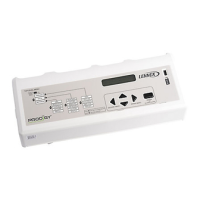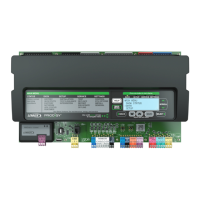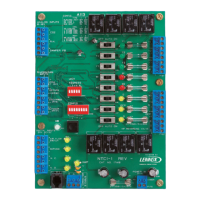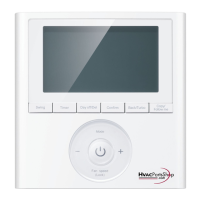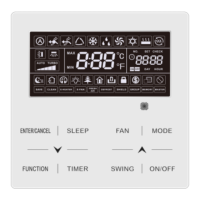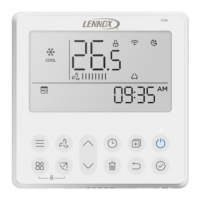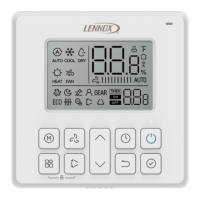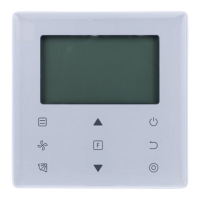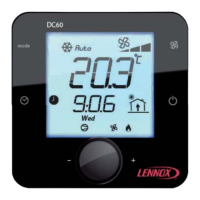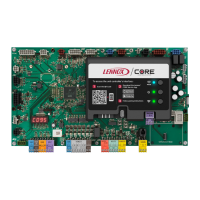Page 40
7.11. Demand Control Ventilation
7.11.1. General
A field-provided and installed indoor air quality (IAQ) sensor can be used with the modulating economizer or OADM to
control carbon dioxide levels in the conditioned space. The carbon dioxide level in a space is an indicator of the number of
people occupying a room. As the carbon dioxide level rises (indicating the occupancy of a room has increased), dampers
modulate open - regardless of outdoor air suitability. Likewise, as the carbon dioxide level falls (indicating the occupancy has
decreased), dampers modulate further closed.
Standard economizer installations have a minimum fresh air ventilation requirement based on maximum room occupancy.
With standard economizer use, the amount of air required for maximum room occupancy is heated or cooled with each
heating or cooling cycle. IAQ installations use the maximum amount of required ventilation air only with maximum room
occupancy; less outdoor air needs to be heated or cooled when fewer people are in the conditioned space.
If the economizer is operating in the free cooling mode and the indoor air quality control requires the damper to open further,
the indoor air quality demand will override the free cooling demand.
The IAQ function is not energized during the unoccupied or night time period.
NOTE - The IAQ sensor may also be used with systems containing a motorized outdoor air damper.
7.11.2. Default Operation
The M3 Unit Controller has a 0-10VDC indoor air quality input for a standard 0 - 2000ppm carbon dioxide sensor. The
economizer starts opening at a carbon dioxide level of 500 ppm (default) (start open set point) and reaches full open at a
carbon dioxide level of 1000ppm (default) (full open set point).
The damper opens to a default position of 100% (see Parameter 117). Determine damper travel position using the following
formula.
% Damper Travel = carbon dioxide ppm - Start Open ppm
5
Example: At a carbon dioxide level of 750ppm, the damper will be approximately 50% open:
% Damper Travel = 750-500 = 50%
5
Use the menu interface to read carbon dioxide ppm. DATA > IN/OUTPUTS > SENSORS > C02. Figure 10 shows default or
proportional operation.
7.11.3. Maximum and Minimum Demand Control Ventilation Damper Settings
Maximum position is set using the following menu path:
Go to SETUP > TEST & BALANCE > DAMPER > DAMPER MAX OPENING = .%
Use the following menu path to modified the minimum damper positions for both high and low blower operations.
Go to SETUP > TEST & BALANCE > DAMPER > MIN DAMPER POSITION BLOWER ON HIGH = .%
Go to SETUP > TEST & BALANCE > DAMPER > MIN DAMPER POSITION BLOWER ON LOW = .%
33
66
100
700
Parameter 118
1000
Parameter 119
Low Temp. Operation High Temp. Operation
CO
2
(ppm)
10°F Parameter 122
20°F
30°F
40°F Parameter
123
105°F Parameter 120
95°F
85°F
75°F Parameter 121
0
Min. Position
Damper Travel: % of
Maximum Open
(Parameter 117
Figure 10. Default Demand Control Ventilation (DCV) Operation

